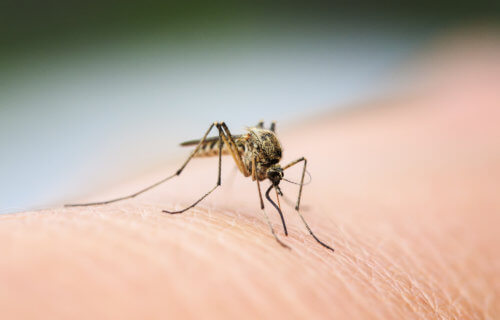FORT COLLINS, Colo. — It’s no easy feat to track mosquito activity and prevent diseases like West Nile, Zika, and malaria that are contracted from infected ones. A team from Colorado State has now introduced harmless, edible DNA particles that can help scientists research mosquito-borne diseases in a whole new way.
The new discovery has its roots in the previous work by Chris Snow, associate professor in the Department of Chemical and Biological Engineering, and his team. Over the years, they have been generating microscopic, porous protein crystals that self-assemble from a protein originally found in Camplyobacter jejuni bacteria. The team have been since trying to identify different possible applications for the crystals, such as wastewater testing by using them to capture viruses.
They found that they could insert fluorescent dyes or synthetic DNA into these non-toxic crystals without the DNA washing away — even after multiple attempts and solvent exposures. “By pure accident, we found a material that holds onto nucleic acids very, very tightly,” Snow explains in a media release. From this, he started to consider that the DNA snippets could act as barcodes that hold specialized information.
In 2017, Rebekah Kading, an associate professor in the Department of Microbiology, Immunology and Pathology, heard of Snow’s work and was inspired by the possibility of the technology being applied to mosquito tagging. Since then, they’ve created their joint team called “Dark Crystal.” They’ve performed several experiments that show that Snow’s idea can label millions of mosquitoes, showing promising in tracking them down.
The technology is able to capture the small insects by having the larvae eat a biomass that contain the DNA crystals. As the mosquitos grow, the DNA remains intact within their guts and creates a readable code that can be translated in labs through methods like quantitative polymerase chain reaction. This is the trait that sets this method apart from conventional ones, since it can track movement throughout the insect’s entire life.
“We could have a map on the landscape of mosquitoes being produced in a certain area,” explains Kading. “We could identify hotspots for mosquito production. I think this would add a whole other dimension of knowledge to the real-time mosquito surveillance and control operations that are already in place.”
In 2020 and 2021, the team put it to the test, tracking mosquitos in eastern Fort Collins. Kading and her team repeated this work the following summer in other areas, and they are now studying their findings.
In the future, Kading and Snow’s team look ahead to continuing their collaboration. They plan to have the mosquitoes ingest new barcodes weekly to help them know when they were eaten. She would also like to conduct experiments where mosquito-borne diseases are more common, such as tropical climates. “This has been a great interdisciplinary collaboration,” Kading said. “It’s been fun learning from each other and interacting with completely different disciplines.”
The findings are published in the journal PNAS Nexus.
